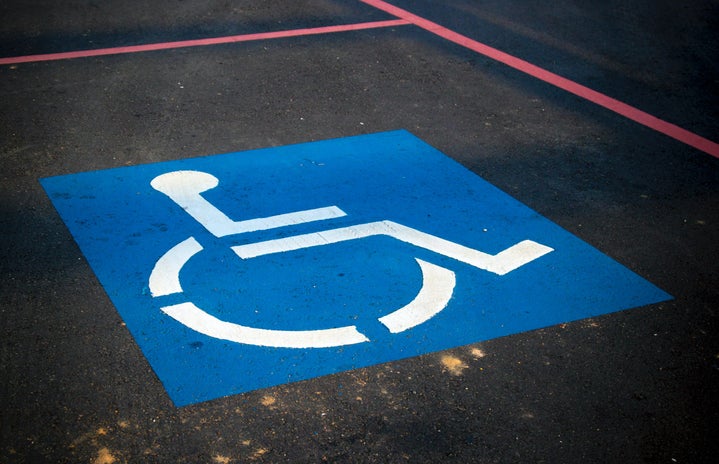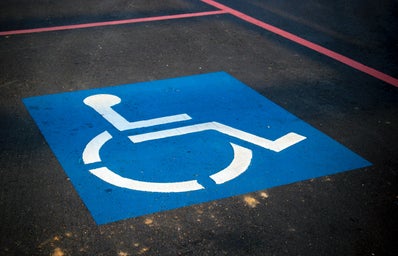The term “disability” encompasses a large group of people, whose qualities can vary significantly. As a result, there is often confusion and misinformation about what is considered a disability and how having a disability can impact someone’s life. Harmless misunderstandings can turn into harmful comments. To prevent this from happening, we should all try to be open minded and educate ourselves on common misconceptions.
Myth: “You can tell if someone has a disability by looking at them.”
Fact: Some disabilities are considered invisible disabilities, which are disabilities that cannot be easily seen. Some examples of these include learning disabilities, mental illnesses, neurological or autoimmune conditions. Often, there is judgment towards someone using a handicap pass for a parking space that may not “look” disabled. People who have invisible disabilities have the choice to disclose their disability with others, with their schools and with their workplace.
Myth: “People with disabilities automatically have a lower quality of life.”
Fact: The quality of one’s life depends on many factors and is different for everyone, regardless if they have a disability or not. One study conducted by the Journal of Consulting and Clinical Psychology, comparing 190 physically disabled people and 195 “able-bodied” people, found there were no differences found in ratings of life satisfaction, frustration with life or mood. People with disabilities have echoed these sentiments on media platforms. However, this often does not align with healthcare workers’ perceptions. 86% of spinal cord-injured high-level quadriplegics rated their quality of life as average or better than average, but only 17% of their ER doctors, nurses and technicians thought they would have an average or better quality of life.
Myth: “Doctor’s perceptions do not impact quality of care.”
Fact: In a study of 714 physicians, only 40% of surveyed physicians reported feeling confident about their ability to provide the same quality of care to patients with disabilities as their other patients received, and only 56.5% strongly agreed that they welcomed patients with disabilities into their practice. Across the country, there have been cases of doctors undervaluing people’s lives and deciding a treatment is futile, or non-beneficial, when it could potentially help.
Myth: “Since the Americans with Disabilities Act, discrimination in the workplace stopped.”
Fact: The Americans with Disabilities Act (ADA) was signed in 1990 and is a civil rights law that prohibits discrimination against individuals with disabilities in all areas of public life, including jobs, schools, transportation and all public and private places that are open to the general public. In practice, nearly one in ten working adults with disabilities reported experiencing some kind of workplace discrimination within the five years after the passage of the ADA. Examples of workplace discrimination are teasing, harassment and a lack of physical accessibility. A third of these respondents permanently exited the workforce due to these injustices.
Myth: “Having a disability does not impact finances that much because of insurance and Social Security.”
Fact: People with disabilities are almost three times more likely to have extreme difficulty paying bills. This is due to a variety of factors, such as the cost of medical care and workplaces challenges. Around half of the country receives insurance from their employer. If someone’s disability impacts their work this can cause financial challenges in relation to a loss of income and needing a different source of insurance. In relation to personal bankruptcies and mortgage foreclosures, one study found over half are a consequence of disability. A survey of people with serious illness and long-term disability found 44% of people said they had used up all their savings.
Myth: “Getting married to someone without a disability does not impact the government benefits of a person with a disability.”
Fact: Marrying someone who does not have a disability can cause the person with a disability to lose their governmental benefits. This is not financially attainable for many people, and there is a nationwide push for change on the state and federal level for marriage equality for people with disabilities.
Myth: “Handicap does not carry a negative connotation.”
Fact: In 1975, the Education for All Handicapped Children was passed to guarantee equal access to public education for children with disabilities. The law was later renamed the Individuals with Disabilities Act (IDEA). This is because the word “handicap” is connected to the stereotype that if someone is disabled, they have a cap in their hand asking for money. It is recommended to not use this word to describe people with disabilities.
Myth: “Deconstructing barriers is only helpful to people with disabilities.”
Fact: Making the world more accessible can benefit everyone since anyone can become disabled. Automatic doors are necessary for wheelchair users, but they can also be helpful to someone pushing a stroller or carrying something with both hands. Making places more accessible creates space for everyone and lets everyone be part of a community.
Many misconceptions about disabilities can impact public policy, healthcare, employment and more. It is important to not judge others and to be continuously open to learning and understanding more about disability experiences and movements.


